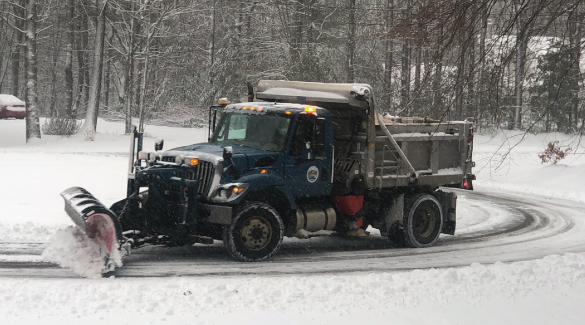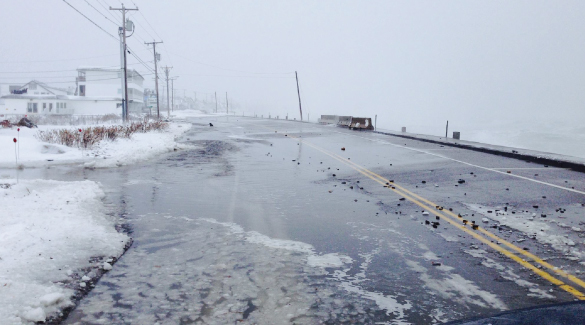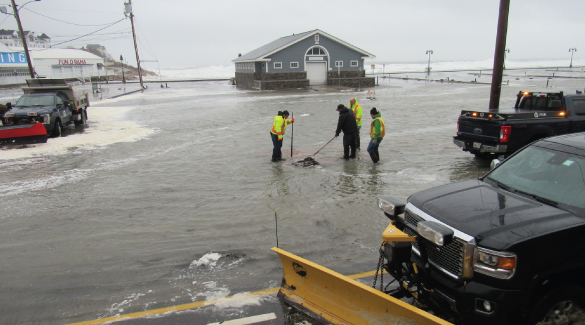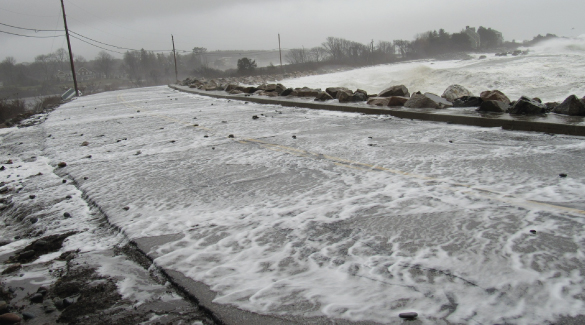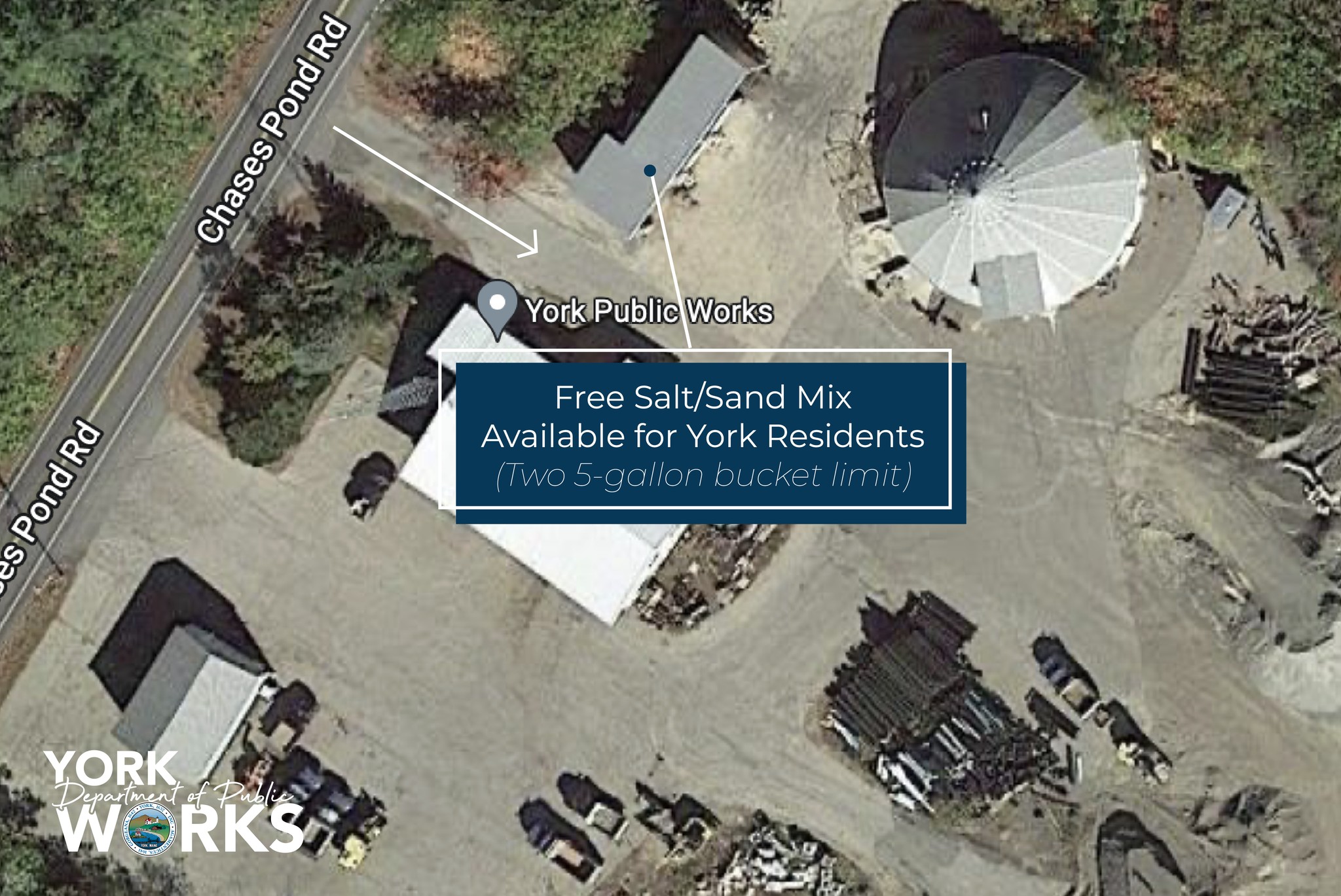
Winter Storm Tips
- Free salt/sand mix is available for York residents! Stop by the DPW Facility at 115 Chases Pond Road and pick up some free sand/salt mixture. You’ll find the sand in the small garage behind the DPW office building. Simply enter the facility at the second driveway off Chases Pond Road (see photo) and you’ll see the small garage on your left. Be sure to bring a shovel and you can fill your own 5-gallon buckets – Limit 2 please!
- As snow continues to pile up, please consider where you place your trash bin. Consider using a black or colored trash bag as white trash bags are difficult to see against the snow. Also, we recommend placing trash bags out in the morning to avoid attracting animals and bag destruction.
- If you are parking your car on the street, please park as close to the snowbank/curb as possible.
- View our mailbox policy by visiting the link, here.
- York residents and visitors can sign up for our email newsletter to stay up to date on winter information, helpful tips, and events and alerts. Sign up below!
Did you know about Road Salt?
In 2022 York DPW responded to 13 severe winter storm events in addition to the typical daily weather conditions expected throughout the winter season. To help keep our roads safe and drivable last year, York DPW purchased over 4,000 tons of road salt.
Sodium chloride (NaCl), or road salt, remains the most used and most cost-effective material for clearing roads. However, when it’s really cold, sodium chloride loses effectiveness at temperatures below 15 degrees F. Salt used with physical snow removal (plowing) remains the dominant winter snow and ice road treatment method throughout the state of Maine.
Some communities may add sand to help increase traction and prior to 2006, it was standard to treat roads with a salt and sand mix. Since then both MaineDOT and Maine Turnpike Authority have discontinued sand use on state roads for environmental and cost reasons. Sand has no melting properties and washes off the road to fill culverts and impact surface waters, and it can contribute to particulate emissions in urban areas as it is blown. The cost of cleaning up the excess sand in the spring can be high. Therefore, sand use has declined both statewide and nationwide.
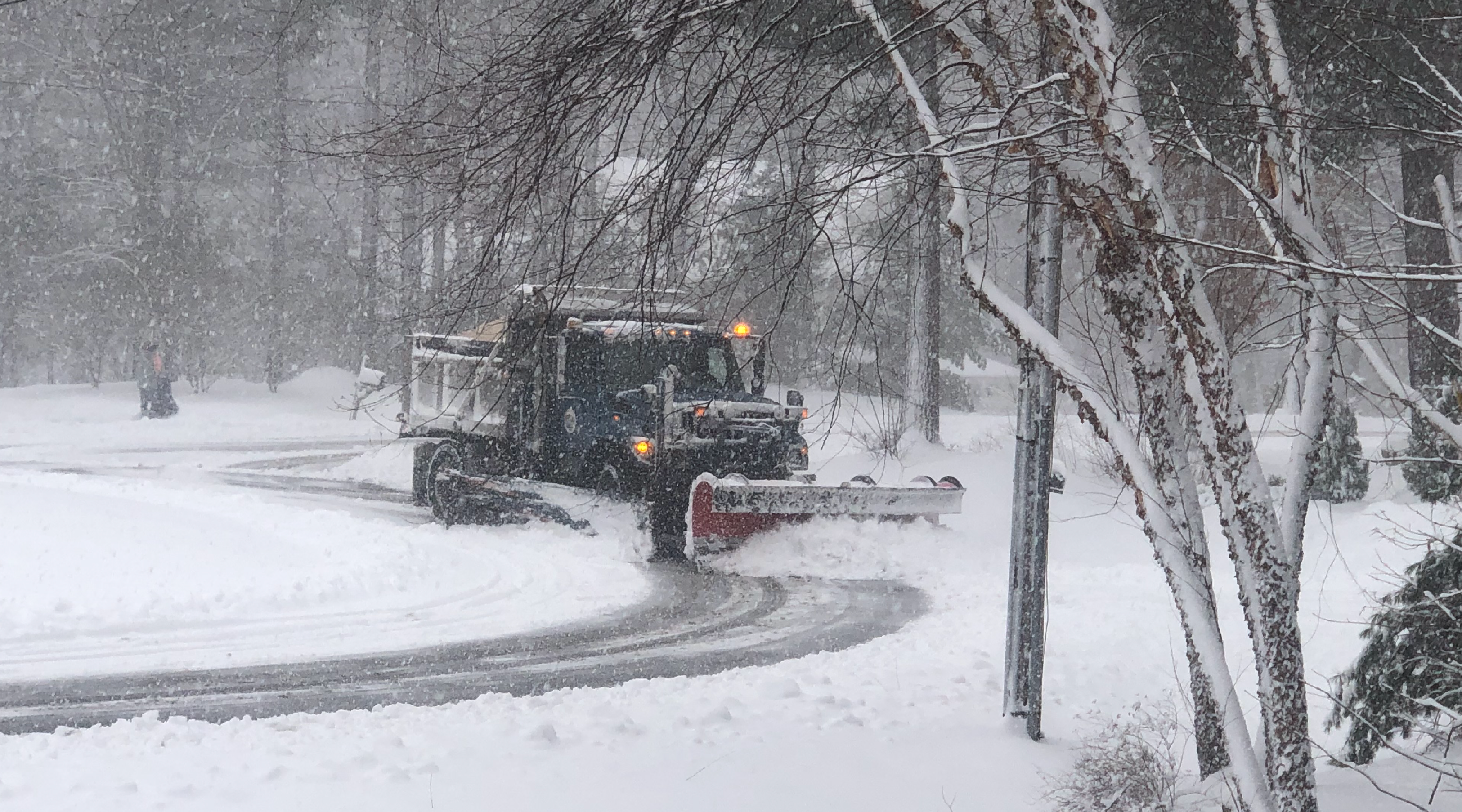
York DPW plow operators are on call 24/7 during storms to remove snow and ice, often working through the night so you can get where you need to go the next day. Major arterial roadways, hills and intersections are often treated before plowing operations begin, usually when 2” of snow falls.
Our Plow teams concentrate first on major roadways and connectors to move traffic along before heading into residential areas. Each Plow Driver has a specific route that they salt/plow for every storm. Each route takes approximately three and a half hours to complete and our crews respond 24/7 to all winter events.
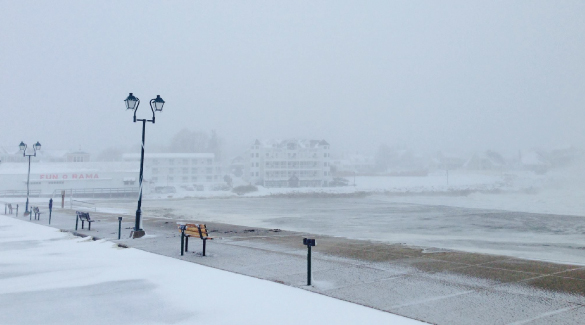
State of Maine Road Report
A report presenting the results of a survey sent to Maine municipalities on winter road maintenance was recently made available. The time frame of the report focuses on 2019-2020 and was part of a broader research project conducted by the University of Maine in cooperation with the Maine Department of Transportation (MaineDOT) to examine winter road maintenance practices, changing winter weather patterns, environmental impacts and winter road safety.
Highlights of the report include the following:
- Maine used approximately 535,852 tons or 1,071,704,000 pounds of road salt in 2019-2020 (equivalent to 787 pounds per person or 23,510 pounds per lane mile).
- Only 28% of Maine municipalities report using an anti-icing policy on their roads
- Most municipal crews receive training, while fewer than half of contracted crews do.
- Municipal governments spent $104 million (67% of all estimated statewide expenditures) on winter road maintenance in 2019-2020 season.
- Budgetary costs of winter road maintenance vary widely among municipalities, even when the costs per lane mile per capita are similar.
- The state of Maine has 45,586 lane miles of winter roads (MDOT 2017).
- Maine reported approximately 1,649,049 registered motor vehicles and 1,047,893 licensed drivers (Maine Bureau of Motor Vehicles 2020).
- As a rural state with a population of 1.36 million, Maine has more miles of roadway per person than any other New England state, leading to a relatively high per resident cost for transportation maintenance and infrastructure.
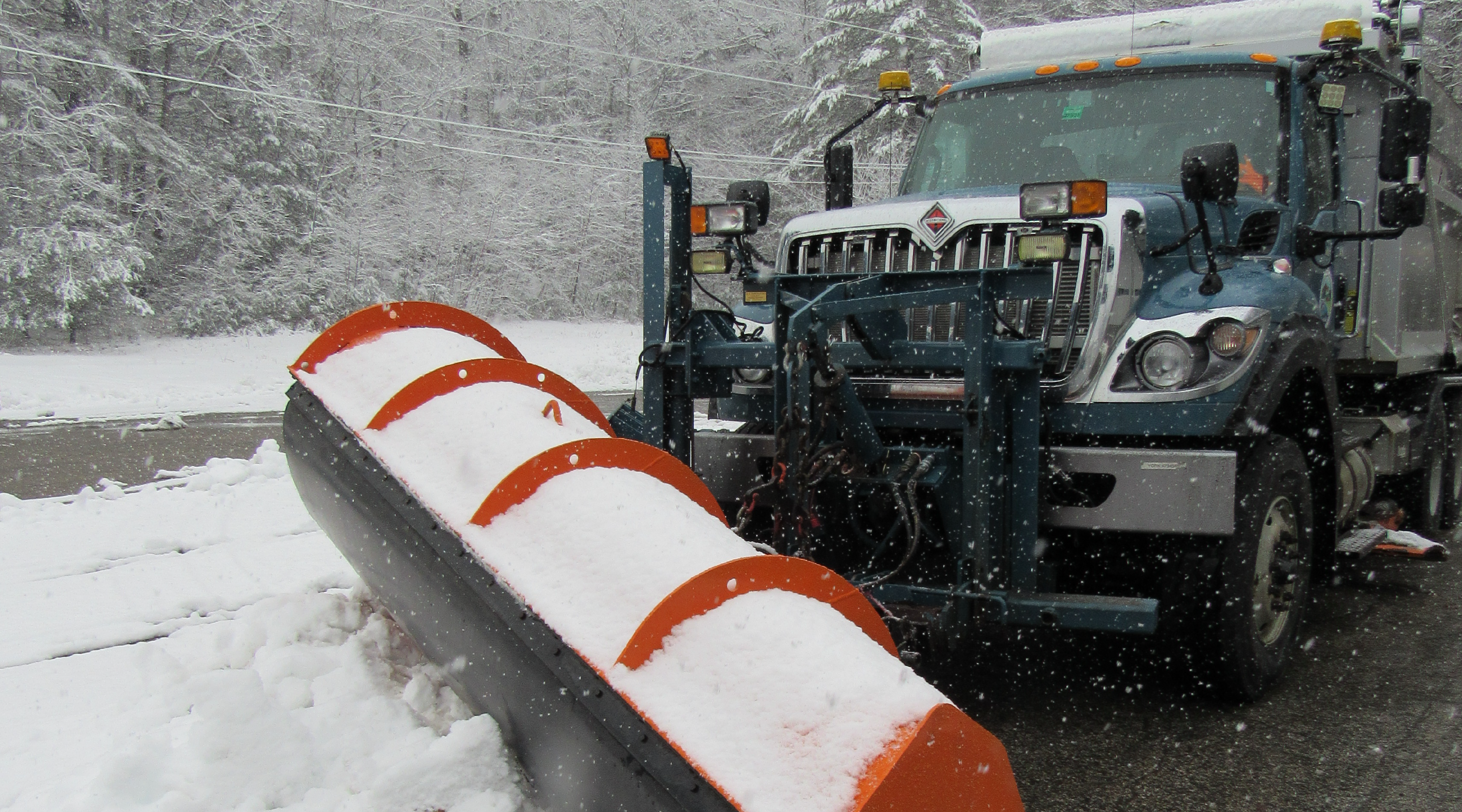
Within Maine there are 483 towns and cities, three reservations, and 10 counties with responsibility for winter road maintenance in Maine. These entities are responsible for 18,283 centerline miles of road (36,729 lane miles) or approximately 80% of the state total roadway. York has 133 centerline miles (the total length of a given road from a start point to an end point) and 300 lane miles (The length of the roadway (i.e. centerline miles) multiplied by the number of through lanes).
The report showed some clear, broad patterns throughout the state. By far the most widely used material on winter roads in Maine is rock salt (sodium chloride, NaCl) due to its cost-effectiveness and ease of handling. York DPW’s annual budget includes money for 7,000 tons of road salt annually.
Learn more about plowing operations or download our Storm Tips Guide in our Documents Center.
View Plowing Page View Documents CenterThe Town of York - Department of Public Works website does not contain data intended for use by investors, audited financial statements can be found on the SEC EMMA website or by visiting the Finance Directors page at Yorkmaine.org
© 2025 YORK DPW. All rights reserved |
Website designed and hosted by MAYO Designs Green hosting with 200% carbon offset.

